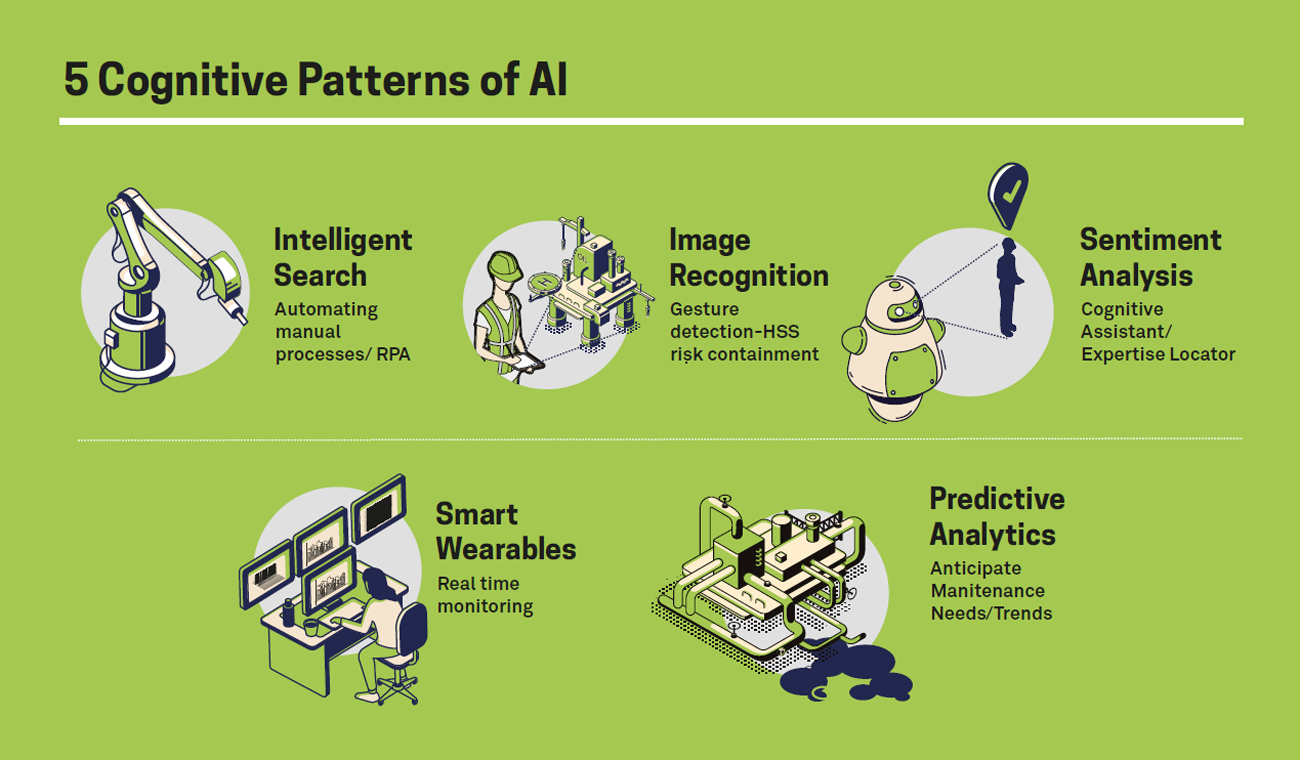The time is now: How artificial intelligence and ‘liberated data’ can help the Energy industry weather the current crisis
Once, the Energy industry was widely seen as a laggard in embracing AI.
No more.
The global pandemic and oil price instability have created intense pressure to cut costs, improve Opex, drive efficiencies, and generate more value. Along with that urgency has come a growing recognition that AI is the technology best-suited to help Energy weather the current crisis, revitalize its operating models, and transform for what lies ahead.
Subsurface data, like seismic data and well logs, are all potentially rich sources for Machine Learning. However according to estimates, only 10% of subsurface data is currently being used. Initiatives like the OSDU are aimed at increasing this number considerably, by liberating data from applications and collecting it in a different way. The core principle of the OSDU is to ‘free’ data from applications; enabling new cloud-native data-driven apps.
But clearly, there is a longer journey ahead. The industry’s ultimate goal must be to formulate a data strategy that harnesses AI to learn from that data — whether it’s neatly structured in rows and columns or completely unstructured — and gain insight. (What’s unstructured data? Examples would include exploration photos included in a presentation or sent to a colleague in an email, or images collected from drone fly-bys.)
Why AI for the Energy Sector?
Unlike conventional computers, artificial intelligence is not programmed. On the one hand, like humans, AI learns from information. Yet on the other, it learns far faster than humanly possible. Machine learning (ML) enables AI to make a correlation between a pattern and an outcome, formulate a hypothesis, take action and then integrate that feedback into its next hypothesis. AI continuously learns, with the goal of predicting future outcomes and events with greater accuracy.
Here are some specific applications every Energy company ought to consider.
Using predictive analytics to drive down maintenance costs
Detecting pipeline cracks and defects at the earliest possible stage can help shrink maintenance costs. Energy companies can leverage AI to anticipate when maintenance of a pipeline is needed or a pump is likely to malfunction.
An AI app would begin by ‘viewing’ thousands of images and videos of pipes. By analysing damage and estimating the degree and probability of fatality, the AI can learn to identify tell-tale signs that predict upcoming failures.
An energy company can use drones to monitor its pipelines, and feed real-time images to the app. By combining these photos and videos with GPS, weather and environmental data, the company can identify damages and defects at an early stage with a high degree of certainty. Such real time data and real time monitoring builds a robust database. The more data AI studies and learns from, the more it can continuously improve its predictive capabilities.
Cognitive assistants and smart expertise locators for a smaller workforce
The continuous aging of the Energy sector workforce has resulted in a loss of core expertise and organisational memory, and has stifled innovation. Slashing overheads in the current crisis is going to painfully exacerbate this trend.
Cognitive assistants and smart expertise locators can help significantly. Through ML (machine learning) a company can capture the expertise of a shrinking labour force, combine it with knowledge datasets and real-time data (e.g. data from connected devices tracking the moves of workers on oil rigs) and use it to train chatbots.
In the field, a worker with an AI-powered wearable assistant can say ‘wake words’ like “I need help” or “I can’t figure this out” and get instant support. This might mean providing step-by-step instructions in video or augmented reality. Or, it might connect the worker with a remote expert somewhere else in the world who can provide direct coaching and guidance.
Avoiding hazardous situations using Image recognition
The Energy sector must now manage facilities that are either somewhat or completely unattended due to staff cuts or Covid-19 containment measures.
Proven technologies, like facial recognition and gesture detection, can help spot behaviours that might create a hazard, like workers showing signs of drowsiness during their shift or moving too close to a dangerous area. When combined with connected worker technology like smart garments with data-collecting sensors, image recognition can power real-time monitoring dashboards and automation that spot signs of danger before it’s too late.
The result is safer employees, avoidance of preventable (and costly) accidents, and increased uptime.
The time for the Energy industry to accelerate its AI journey is now.
The challenges for the industry have never been greater, but its increased interest in AI comes at an ideal moment. A large number of critical applications have already been developed and battle-tested under real field conditions. They are ready to be applied.
With the right partners, the Energy sector can emerge from this crisis stronger and ready for the future. The time to start the journey is now.
AI (Artificial Intelligence) and Machine Learning (ML) glossary

Industry :

Silvia Cambie
Transformation Director, Wipro ENR
Silvia has more than 15 years of experience in emerging tech, Cloud, AI and machine learning. In Wipro, she leads digital transformation projects focusing on the energy sector. In her work with IBM Watson prior to joining Wipro, she learned the power of applying creativity to the way we train machines; the world’s AI journey is in its early days and keeping an open mind counts most. Silvia has also consulted for financial services and telco. Silvia speaks five languages and frequently keynotes international conferences. For the past thirteen years, she has been writing a blog on tech and its impact on the workplace.